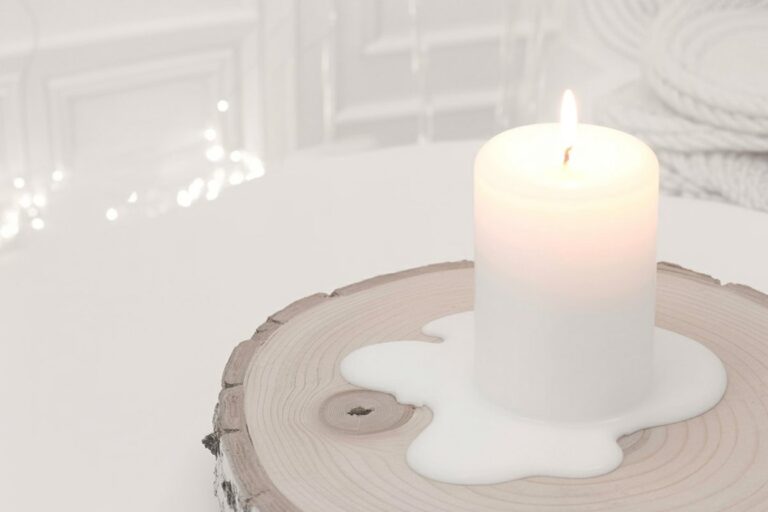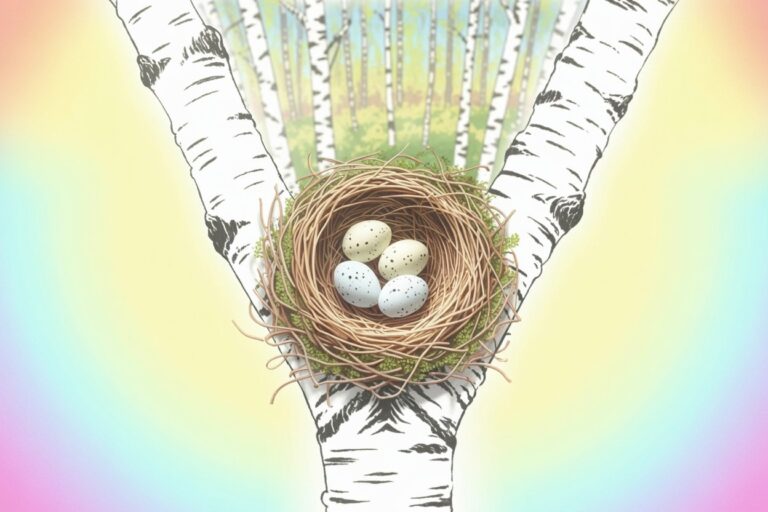What Is Yule? A Complete Guide to the Winter Solstice Celebration
Please note that posts on this site may contain affiliate links
The frost-kissed air carries whispers of ancient celebration, and golden candlelight flickers against evergreen boughs as winter’s longest night approaches. Yule, the winter solstice, marks one of the most sacred turning points in the wheel of the year. A time when darkness reaches its deepest point and the promise of returning light begins to stir.
If you’ve ever felt drawn to the quiet magic of winter, wondered about the roots of holiday traditions, or sensed something deeper calling during the December season, you’re not alone. Yule offers a path to connect with the profound rhythms of nature, honor the sacred pause between seasons, and celebrate the eternal cycle of death and rebirth that governs all life.
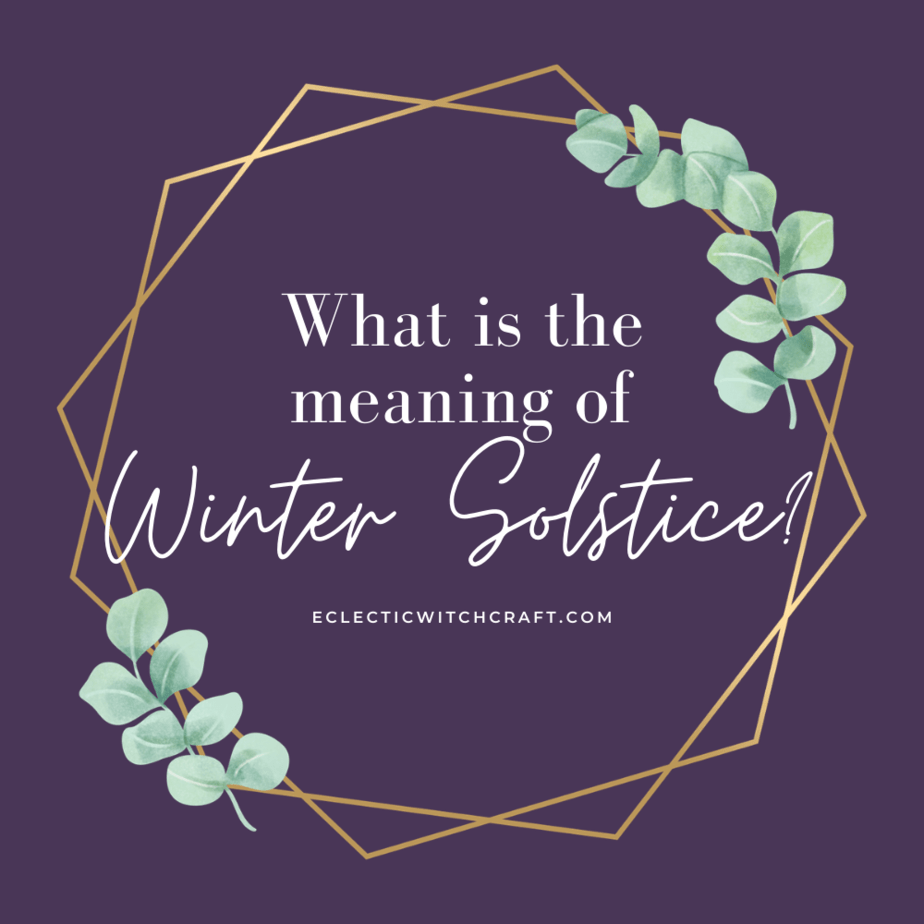
- What Is Yule?
- When Is Yule Celebrated?
- The Ancient Roots and History of Yule
- Understanding Yule vs Christmas
- The Sacred Symbols of Yule
- How to Celebrate Yule Today
- Yule Feasting and Seasonal Foods
- Magical Practices for the Season
- Astrology and Yule
- Working with Lunar Energy During Yule
- Deity Work and Seasonal Connections
- Practical Magic for Winter
- Developing Your Magical Practice
- Planning and Manifestation
- Advanced Practices
- Creating Lasting Memories
- Embracing the Sacred Pause
What Is Yule?
Yule is the winter solstice celebration that honors the shortest day and longest night of the year in the Northern Hemisphere. As the winter solstice approaches, typically around December 21st, we mark the moment when the sun appears to stand still before beginning its journey back toward longer days.
At its heart, Yule represents the triumph of light over darkness. Not as a battle, but as a gentle, inevitable return. For Pagans, the shortest day of the year marks the end of the descent into darkness and the beginning of the return of the light as the days begin to get longer after the solstice. This astronomical event has been celebrated for thousands of years across cultures, making it one of humanity’s oldest and most universal holy days.
Modern witches and pagans celebrate Yule as one of the eight sabbats in the Wheel of the Year, though you don’t have to be pagan to celebrate Yule. The celebration connects us to the natural world’s rhythms and offers a meaningful alternative or complement to commercial holiday traditions.
Understanding how to pronounce the eight sabbats can help you feel more confident as you begin exploring these ancient celebrations.
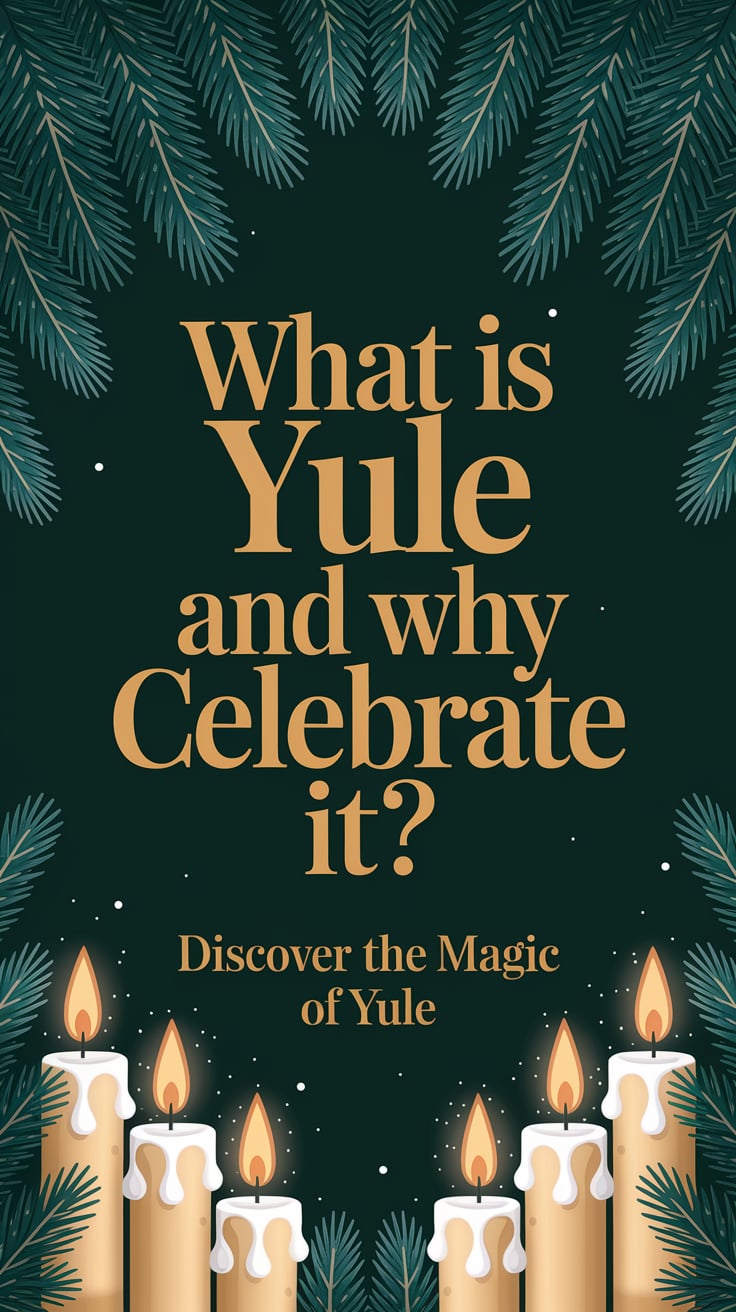
When Is Yule Celebrated?
Yule occurs on the winter solstice, which falls between December 20th and 23rd each year in the Northern Hemisphere. The exact date and time vary slightly due to Earth’s orbital mechanics, but the astronomical event itself is precise: it’s the moment when the sun reaches its lowest point in the sky.
For those following traditional practices, the festivities lasted up to 12 days, hence the familiar “12 days of Christmas” found in later traditions. This extended celebration honored the gradual return of light and provided community gathering during the darkest time of year.
When is winter solstice varies slightly each year, so checking the exact timing can help you plan your celebrations around this astronomical turning point.
| Year | Winter Solstice Date | Time (EST) |
|---|---|---|
| 2025 | December 21, 2025 | 10:03 AM |
| 2026 | December 21, 2026 | 3:50 PM |
| 2027 | December 21, 2027 | 9:42 PM |
| 2028 | December 21, 2028 | 3:19 AM |
| 2029 | December 21, 2029 | 9:14 AM |
| 2030 | December 21, 2030 | 3:09 PM |
| 2031 | December 21, 2031 | 8:55 PM |
| 2032 | December 21, 2032 | 2:56 AM |
| 2033 | December 21, 2033 | 8:46 AM |
| 2034 | December 21, 2034 | 2:34 PM |
| 2035 | December 21, 2035 | 8:31 PM |
| 2036 | December 21, 2036 | 2:12 AM |
| 2037 | December 21, 2037 | 8:08 AM |
| 2038 | December 21, 2038 | 2:01 PM |
| 2039 | December 21, 2039 | 7:41 PM |
| 2040 | December 21, 2040 | 1:33 AM |
| 2041 | December 21, 2041 | 7:19 AM |
| 2042 | December 21, 2042 | 1:04 PM |
| 2043 | December 21, 2043 | 7:02 PM |
| 2044 | December 21, 2044 | 12:43 AM |
| 2045 | December 21, 2045 | 6:36 AM |
| 2046 | December 21, 2046 | 12:28 PM |
| 2047 | December 21, 2047 | 6:07 PM |
| 2048 | December 21, 2048 | 12:02 AM |
| 2049 | December 21, 2049 | 5:51 AM |
| 2050 | December 21, 2050 | 11:39 AM |
| 2051 | December 21, 2051 | 5:30 PM |
| 2052 | December 21, 2052 | 11:15 PM |
| 2053 | December 21, 2053 | 5:06 AM |
| 2054 | December 21, 2054 | 10:58 AM |
These times are based on data from the Farmers’ Almanac.


The Ancient Roots and History of Yule
The word “Yule” comes from the Old Norse “jól,” referring to a midwinter festival that was central to Germanic and Scandinavian cultures. Yule was a pagan festival that followed the midwinter solstice and celebrated the return of the sun as the days slowly started to get longer again.
Ancient celebrations varied across cultures, but common themes emerged: the lighting of fires to encourage the sun’s return, feasting to ensure prosperity, and gathering with community during the harsh winter months. The Romans celebrated Angeronalia, their own winter solstice festival, while other cultures developed their own solstice traditions around similar themes of light, renewal, and community.
As Christianity spread through Europe, Yule traditions were incorporated into Christmas during the Christianization of Germanic peoples. Many holiday customs we recognize today (evergreen decorations, gift-giving, feast preparations, and the Yule log) originated in these ancient pagan celebrations.
The rich mythology surrounding this season includes stories of divine figures who embody the themes of death and rebirth. The mythology of Yule encompasses gods and goddesses from various traditions, including the Norse god Baldr, the Greek story of Persephone’s return, and the eternal battle between the Oak King and Holly King. Winter deities like Marzanna, the Slavic goddess of death and winter, remind us that this season has always been associated with both ending and renewal.

Understanding Yule vs Christmas
One of the most common questions about Yule concerns its relationship to Christmas. While these celebrations share historical roots and similar customs, they serve different purposes and hold distinct meanings.
Yule is a pagan festival with no specific religious ties to Christianity. It often involved various nature-based rituals and celebrations to mark the changing of seasons. Christmas, on the other hand, is a Christian holiday that holds religious significance for Christians.
🕯️ Creating Your Winter Sanctuary
Transform any corner into a Yule haven: drape soft wool throws over reading chairs, cluster pillar candles on vintage brass plates, and tuck sprigs of pine behind picture frames. The scent of cinnamon simmering on the stove mingles with the green breath of evergreens, creating an atmosphere where magic feels as natural as breathing.
Many modern practitioners find ways to honor both traditions. There are reasons to love being a witch during Christmas, as the season’s focus on light, generosity, and renewal aligns beautifully with magical practice. You can explore Christmas rituals that embrace the magic of Yule without compromising your spiritual path.
For those navigating pagan winter solstice traditions alongside Christmas customs, remember that many beloved holiday elements, from evergreen trees to gift-giving, originated in pre-Christian celebrations.


The Sacred Symbols of Yule
The deep forest greens and burnished copper tones of Yule’s symbols carry profound meaning, connecting us to the natural world’s wisdom during winter’s depths.
December dusk arrives early, painting the world in shades of plum and pewter. Inside, amber light flickers against walls hung with evergreen garlands, their resinous perfume mixing with the vanilla warmth of beeswax candles. This is the hour when magic feels closest, when the veil between seasons grows gossamer-thin.
Evergreen Plants: Symbols of Eternal Life
Pine, fir, spruce, and other evergreens remain vibrant throughout winter’s harshest months, making them powerful symbols of life’s persistence. Ancient peoples brought these plants indoors to ward off the forces of darkness and remind themselves that life endures even in the deepest cold.
Holly holds special significance with its glossy leaves and bright red berries. The prickly foliage was believed to repel negative spirits, while the berries represented the life-giving blood of the goddess. Mistletoe, hanging between earth and sky, symbolized the threshold between worlds, a perfect representation of the solstice’s liminal energy.
Creating DIY Yule tree rune ornaments adds personal meaning to your evergreen decorations, while Yule wreaths can be crafted or purchased to honor the wheel of the year.
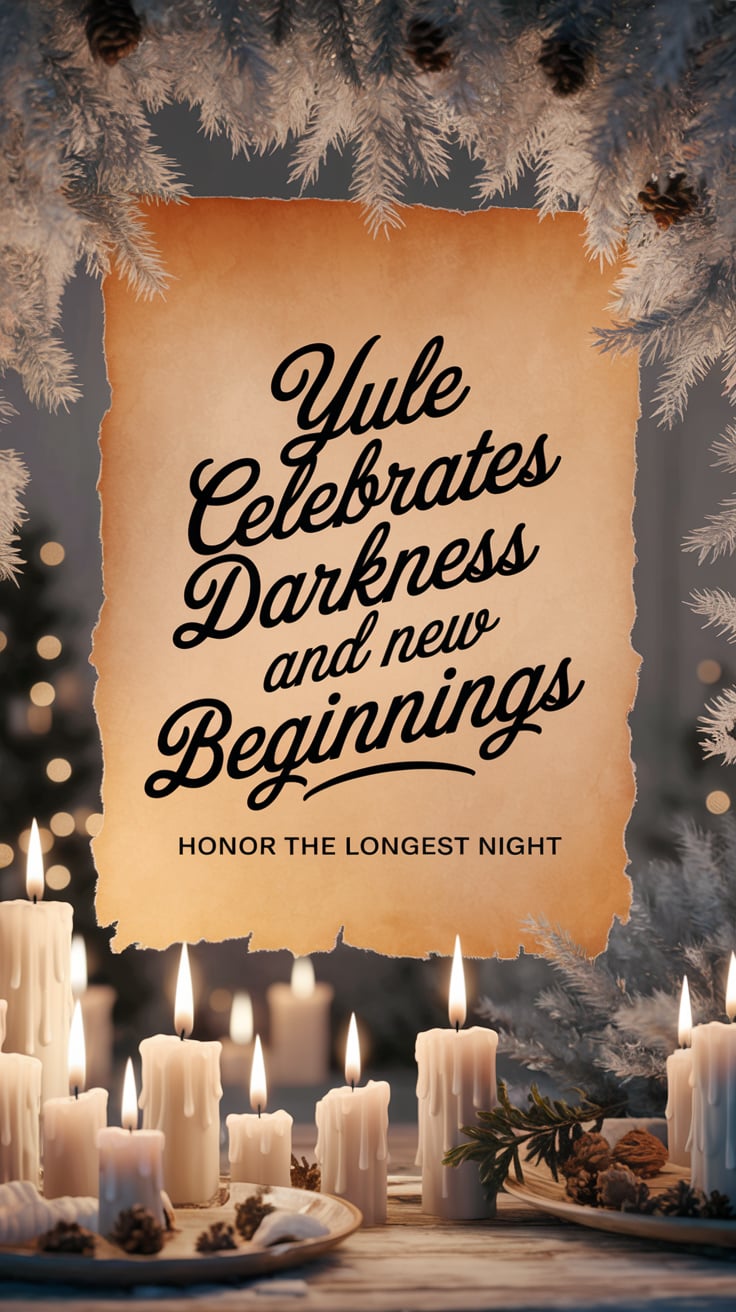
The Yule Log: Honoring Solar Power
The tradition of burning a Yule log connects us directly to our ancestors’ fire-keeping practices. Traditionally cut from oak or ash trees, the log was carefully selected and ceremonially burned to ensure the sun’s return and the hearth’s warmth throughout winter.
Modern practitioners can create a traditional Yule log for their own celebrations, whether for actual burning or as decorative centerpieces. The log represents the sun’s power and our human partnership with natural forces.
Candles and Light: Guiding the Sun’s Return
Golden flames dancing in the winter darkness embody Yule’s central theme of light returning to the world. Candles serve both practical and magical purposes, providing warmth and illumination while symbolizing hope, renewal, and the divine spark within all life.
Yule candle holders designed for the season can enhance your celebrations, while understanding candle color meanings helps you choose the right hues for your intentions. Gold candles align with solar energy, while red represents the life force and green connects to evergreen vitality.
Essential oils for Yule can enhance your candle magic, with scents like pine, cinnamon, and orange creating the perfect aromatic atmosphere for solstice celebrations.

Winter Crystals: Stones of Light and Protection
The mineral kingdom offers powerful allies for Yule celebrations. Crystals that sparkle and shine during winter include clear quartz for amplifying light energy, garnet for passion and vitality, and ruby for protection and prosperity.
These stones can be incorporated into altars, carried as talismans, or used in seasonal rituals to connect with the earth’s crystalline wisdom during the darkest time of year.
Embody Winter Goddess Energy:
- Wear deep jewel tones: burgundy, forest green, midnight blue
- Keep a small piece of garnet or clear quartz in your pocket
- Braid tiny bells into your hair for movement and sound
- Apply pine-scented balm to pulse points
- Walk barefoot on cold floors to ground winter’s electric energy
How to Celebrate Yule Today
Modern Yule celebrations blend ancient wisdom with contemporary life, creating meaningful traditions that honor both the season’s spiritual significance and practical needs.
Creating Sacred Space and Altars
Setting up a dedicated space for Yule helps focus your intentions and creates a visual reminder of the season’s themes. Consider incorporating evergreen branches, candles in earth tones, symbols of the sun, and representations of your chosen deities.
Working with Persephone during the winter solstice offers one approach to deity connection, while honoring Hekate during cold winter months provides another path. Some practitioners explore working with Lucifer during the winter solstice as a light-bearer deity, while others connect with sun goddesses and their myths.
Yule Rituals and Ceremonies
Winter solstice rituals can range from simple candle lighting to elaborate ceremonies. Many practitioners enjoy magical Yule traditions that connect them to the season’s energy while creating new family customs.
For those drawn to outdoor celebration, celebrating Yule outdoors offers powerful ways to connect directly with nature’s rhythms. Consider winter solstice hikes as a way to witness the season’s beauty firsthand.
Exploring winter solstice magic with Artemis provides guidance for working with the huntress goddess during this liminal time.
❄️ Solstice Morning Ritual
Rise before dawn on the longest night. Light a single white candle and sit in comfortable silence, watching darkness slowly surrender to light. Whisper your gratitudes for what has ended and your hopes for what begins. This simple practice connects you to millions who have witnessed this same celestial dance throughout history.

Self-Care and Seasonal Wellness
The winter months can challenge our physical and emotional well-being, making self-care practices essential to healthy celebration. Yule self-care rituals help combat seasonal depression while honoring the body’s need for rest and renewal.
Consider creating a winter solace jar for inner peace or working with protection jar spells to maintain energetic boundaries during the social intensity of the holiday season.
Winter warding jars with pine and salt offer specific protection for your home, while protection jar spells for energy vampires help maintain your energy during busy social seasons.
If you just need to chill out, take a look at our Yule witchy movie guide!
Reflection and Planning
Yule’s energy supports both looking back and planning ahead. Yule journal prompts help you process the year’s experiences while setting intentions for the growing light ahead.
The season also aligns beautifully with pagan New Year traditions, offering multiple opportunities for reflection and renewal. For those working on personal transformation, weight loss affirmations using law of attraction can support New Year intentions.
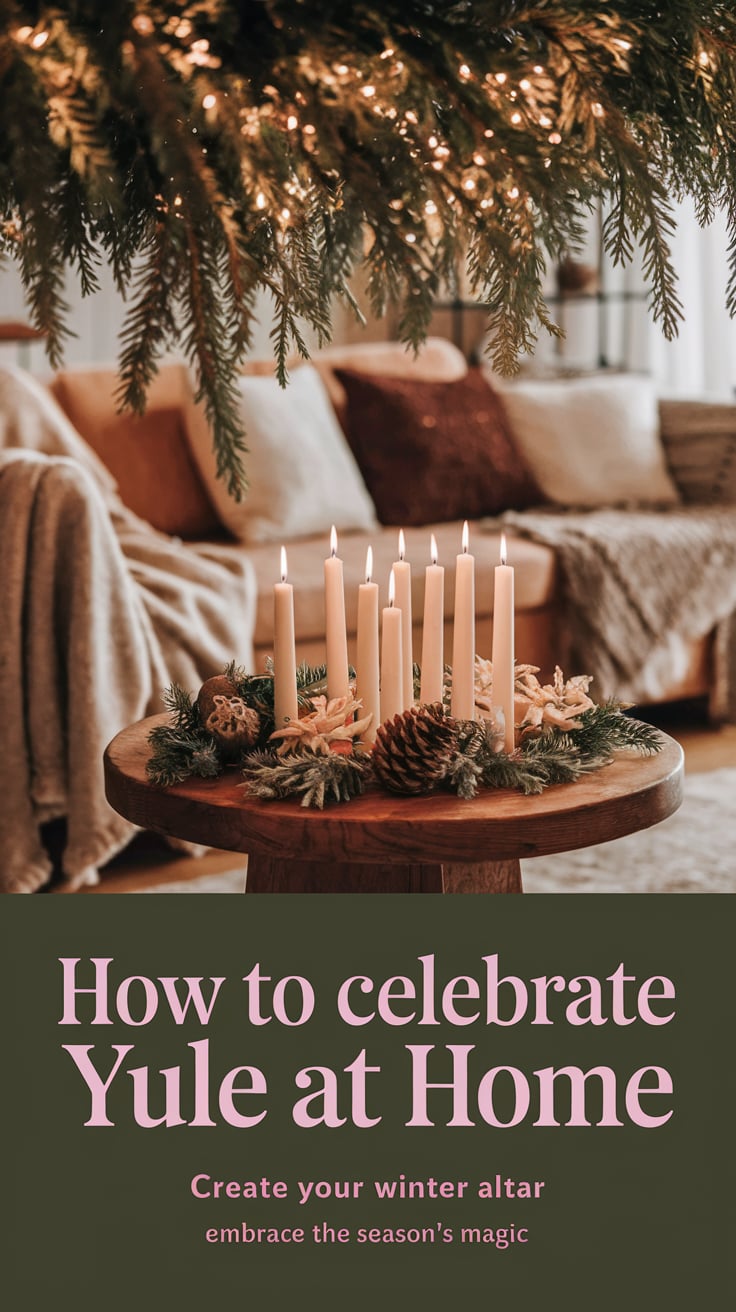
Yule Feasting and Seasonal Foods
Food plays a central role in Yule celebrations, with recipes that warm the body and nourish the spirit during winter’s coldest months. Traditional feast foods include roasted meats, root vegetables, spiced drinks, and sweet treats that celebrate the season’s flavors.
Hosting a Yule feast provides comprehensive guidance for creating memorable seasonal meals. For specific recipes, try herb-crusted goat cheese balls as elegant appetizers, or create a charcuterie wreath as both food and decoration.
Sweet treats add joy to winter celebrations. Christmas ooey gooey butter cookies and kitchen sink cookies provide delicious options for sharing with family and friends.
Kitchen witchcraft during Yule can incorporate protective elements through Mars herbs in protective recipes. A fierce protection broth warms the body while providing energetic protection, and protective oil recipes can enhance your seasonal cooking.
🍯 Kitchen Witch Yule Vibes
Fill mason jars with dried orange peels, cinnamon bark, and star anise. Tie with burgundy velvet ribbon and gift to friends, or keep one by your stove to add warmth to winter teas. The ritual of preparing seasonal blends becomes a meditation on abundance and the alchemy of simple ingredients transformed by intention.

Magical Practices for the Season
Winter’s energy supports specific types of magical work, from protection spells to manifestation rituals that align with the season’s themes of death, rebirth, and renewal.
Protection and Warding
The long nights of winter traditionally called for protective magic. Herbs that absorb negative energy provide alternatives to sage for space clearing, while protection jar spells that shield energy offer portable protection during challenging times.
Salt magic for every spell type becomes particularly relevant during winter, as salt’s preservative and protective qualities align with the season’s energy.
Divination and Inner Work
Winter’s contemplative energy supports divination practices and shadow work. Herbs for divination and psychic powers can enhance your intuitive practices, while full moon divination techniques help you work with lunar energy throughout the season.
Tarot for tough times offers specific approaches for navigating winter’s emotional challenges, while tarot for goal setting helps you plan for the year ahead.
Seasonal Spell Types
Winter supports specific magical intentions. Essential spell types for beginner witches include protection, healing, and manifestation work that aligns with seasonal energies.
For those working with darker aspects of magic, spells to integrate dark desires safely provide guidance for shadow work during winter’s natural time of introspection.

Astrology and Yule
The winter solstice occurs when the sun enters Capricorn, marking a shift from Sagittarius’s expansive energy to Capricorn’s grounded, practical focus. Understanding how the winter solstice moon sign influences the celebration adds another layer to your seasonal practice.
Your personal moon sign placement during winter solstice affects how you experience the season’s energy, while love and romance during moon transits provides guidance for relationship work during the winter months.
Divination techniques for each sun sign, moon sign, and rising sign help you choose the best methods for your winter solstice readings.
Working with Lunar Energy During Yule
The moon’s phases during winter offer specific opportunities for magical work. Working with Hekate during the full moon provides guidance for goddess work, while moon magic crystals enhance your lunar practice.
Understanding where to store moon water and whether moon water can touch sunlight helps you work effectively with charged water during winter months.
Creating moon water during the waning moon focuses on healing and purification, while the magic of full moon tea provides recipes and rituals for lunar celebration.

Deity Work and Seasonal Connections
Winter’s energy supports work with specific deities associated with death, rebirth, light, and transformation. The complete guide to goddess archetypes helps you understand different divine energies available during this season.
For those drawn to specific deities, Artemis and her mysteries provides comprehensive guidance for working with the huntress goddess, while Aphrodite spells for love and war explore the goddess’s dual nature.
Lilith spells for dark divine feminine energy offer powerful winter work, supported by recipes like pomegranate rituals for Lilith and sacred serpent honey cakes.
Zeus’s blessing rituals provide another approach to divine connection, while faerie offerings of bread and milk help you maintain relationships with nature spirits during winter.
Winter’s Whispered Wisdom
The season teaches through silence. Notice how snow muffles sound, how bare branches create intricate lace against pearl-gray skies. In this hush, we learn to listen not with our ears but with our bones, feeling the earth’s slow exhale as she settles into rest. Magic lives in these quiet spaces between breaths.

Practical Magic for Winter
Winter’s challenges call for practical magical solutions. Simple witchcraft for busy lives offers quick rituals for stress relief and energy management during the hectic holiday season.
Easy simmer pot recipes for financial abundance provide kitchen witchcraft solutions for prosperity work, while fire magic through the year helps you work with elemental energy during cold months.
Pagan prosperity practices align with abundance work using earth-based methods, while money spells for spring help you plan ahead for the growing season.
Developing Your Magical Practice
Winter provides excellent opportunities for deepening your magical knowledge and skills. Beginner witch research topics help you plan your studies, while beginner candle spells provide fifteen accessible rituals perfect for seasonal practice.
Candle magic resources for beginner witches support your flame-based work, while aromatherapy candle making lets you create custom tools for your practice.
Understanding protection circles and the doctrine of signatures provides essential foundation knowledge for magical work.

Planning and Manifestation
Winter’s energy supports planning and manifestation work for the coming year. A witch’s guide to setting goals provides magical approaches to New Year planning, while finding your spell signature helps you understand your natural magical style.
Understanding why vague spell intentions backfire improves your magical effectiveness, while magical missteps with multi-purpose tools helps you avoid common errors.
Writing, wearing, and burning manifestation anchors provides three powerful techniques for bringing your intentions into reality.
Advanced Practices
For those ready to explore deeper magical work, winter offers opportunities for advanced practices. Spells for emotional intimacy can strengthen partnerships during the season of gathering, while sensory deprivation rituals for spirit communication utilize winter’s natural quiet for otherworldly connection.
Magical numbers in spellwork provides angel number applications for magical practice, while understanding your rising sign’s potential helps you work with astrological energies.
Moon sign astrology for emotions and inner self supports winter’s natural tendency toward introspection, while full moon witchcraft traditions provides comprehensive lunar guidance.
Simple Ways to Honor the Longest Night:
- Light a candle at sunset and let it burn until sunrise
- Write a letter to your future self to open at summer solstice
- Create a small altar with white flowers and silver objects
- Take a moonlit walk, even if it’s just around the block
- Share hot soup with someone who needs warmth
Creating Lasting Memories
Winter celebrations create lasting memories through mindful traditions and meaningful connections. Witchy Elf on the Shelf ideas can add magical fun to family traditions, while Yule decorations that repurpose for Imbolc help you transition seamlessly between seasons.
Whether you’re celebrating alone or with others, Yule offers opportunities to create meaningful traditions that honor both ancient wisdom and modern needs. The season’s emphasis on light, renewal, and community provides a foundation for celebrations that nourish the soul while connecting us to the natural world’s rhythms.
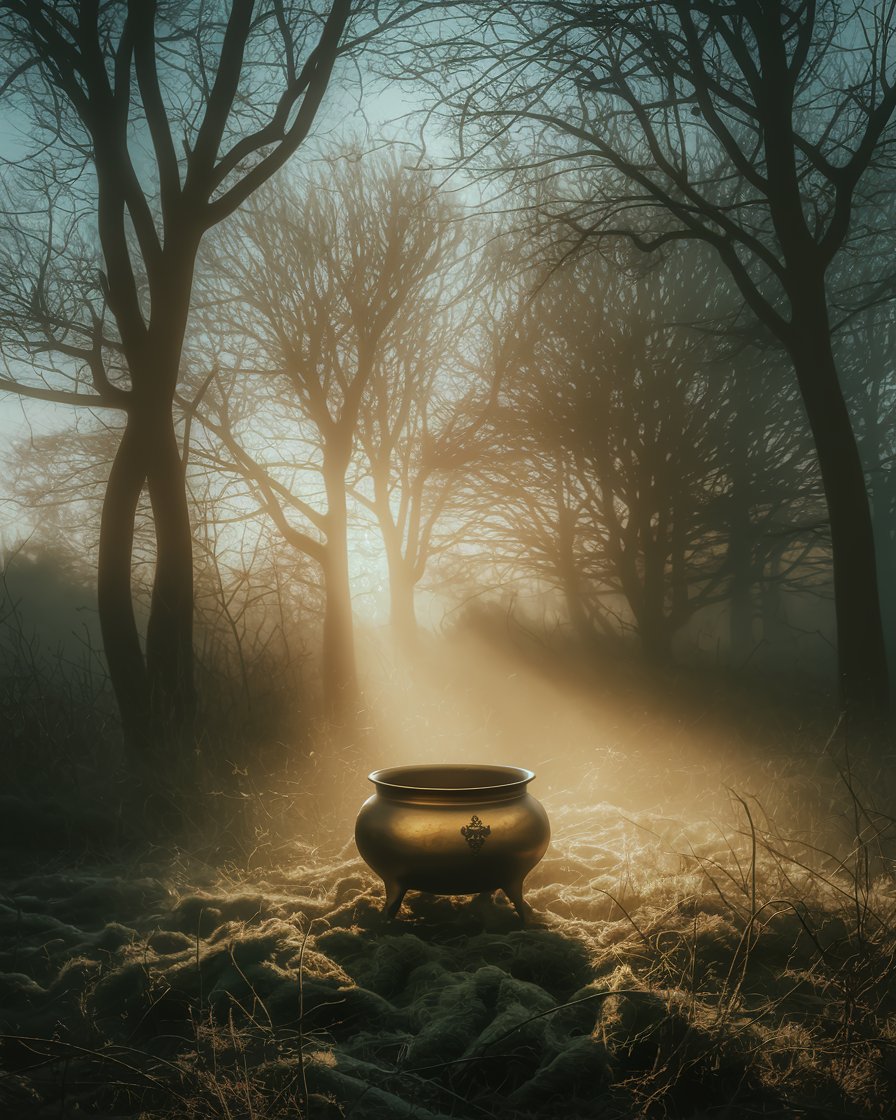
Embracing the Sacred Pause
Yule invites us to embrace winter’s sacred pause. It’s a time for reflection, renewal, and gentle preparation for the year ahead. In a world that often demands constant activity and bright cheer, the winter solstice offers permission to honor darkness, rest, and the quiet wisdom that comes from looking inward.
As you explore Yule’s rich traditions and create your own seasonal practices, remember that this celebration is ultimately about finding light within darkness, hope within challenge, and renewal within what appears to be ending. The promise of the winter solstice lives not in the immediate return of spring, but in the trust that light will return, days will lengthen, and life will continue its eternal dance of death and rebirth.
Whether you’re drawn to ancient mythology, seasonal self-care, magical practice, or simply the beauty of winter’s quiet moments, Yule offers a pathway to deeper connection with yourself, your community, and the natural world that sustains us all. In honoring this ancient celebration, we join our voices with countless generations who have gathered around fires, lit candles against the darkness, and celebrated the enduring power of light to overcome the longest night.
The winter solstice reminds us that even in the depths of darkness, the seed of light is already stirring, waiting for the right moment to begin its journey back to the world. This is the true magic of Yule: it’s not in the ceremonies or symbols, but in the profound truth that endings are always beginnings, and that the light we seek is already within us, waiting to be rekindled and shared.
Test your knowledge
For comprehensive seasonal guidance, explore the complete collection of Yule, Winter Solstice, and Christmas resources to deepen your understanding and enhance your celebrations.
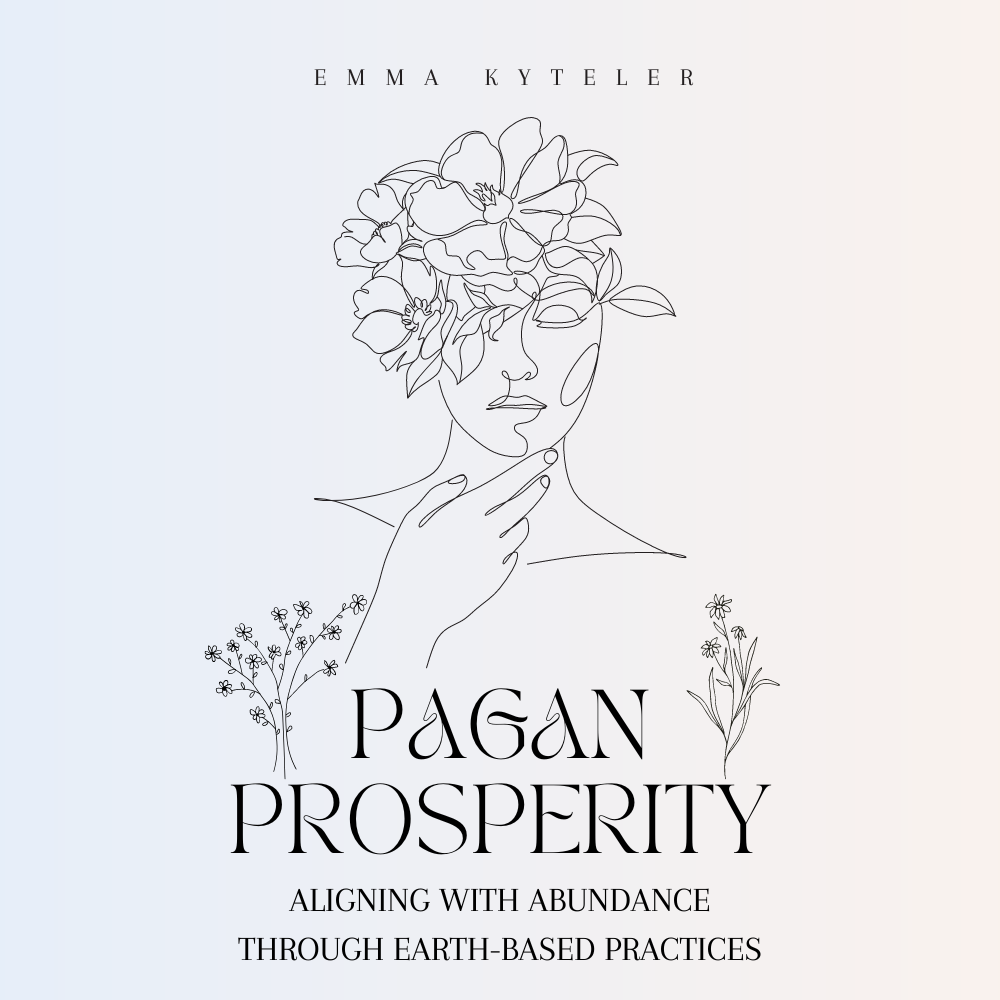
Pagan Prosperity: Unlock Abundance with Earth-Based Magic
Manifest wealth and abundance with ‘Pagan Prosperity: Aligning with Abundance through Earth-Based Practices‘ for just $2.99—harness the power of Saturn and the Earth element to transform your financial future.






